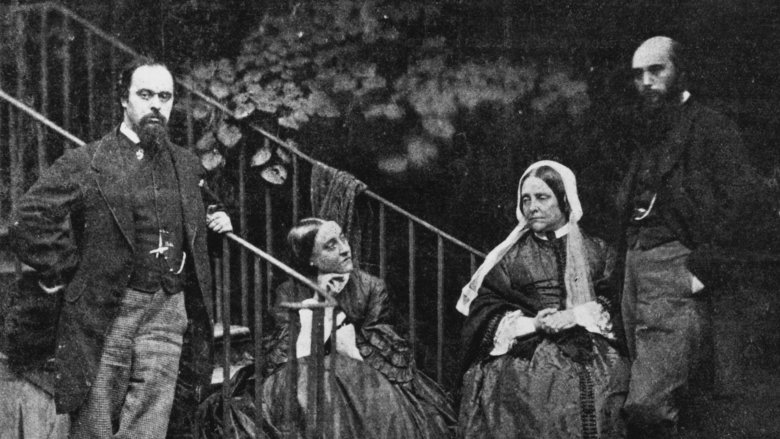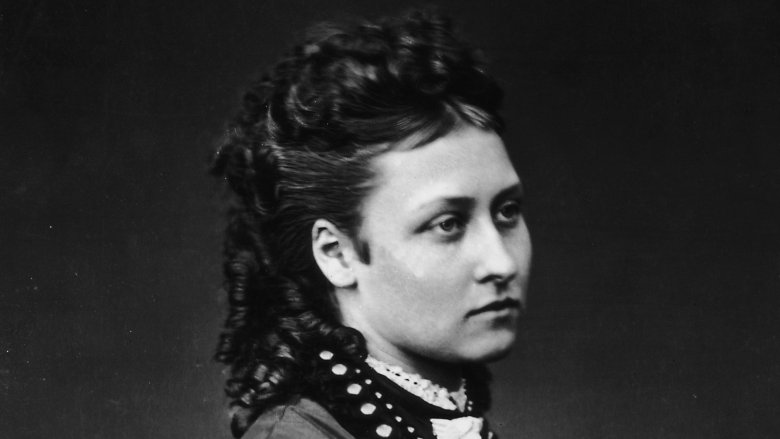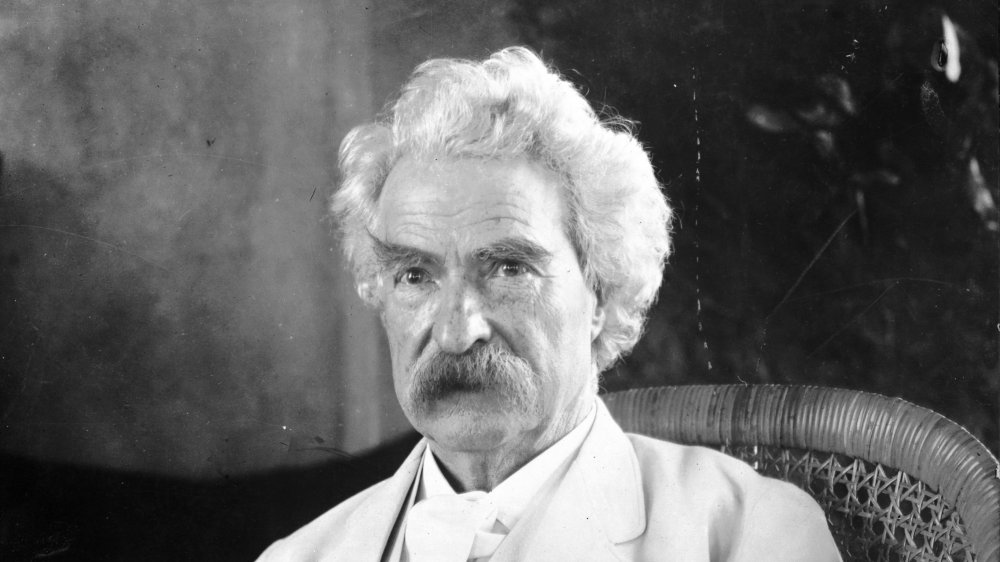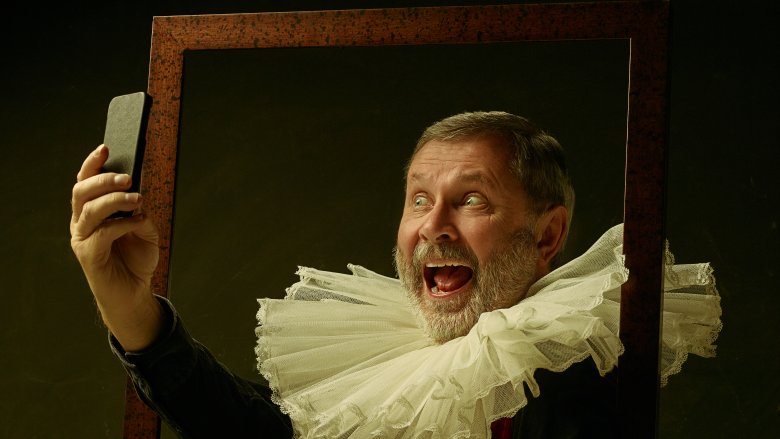The Real Reason No One Ever Smiled In Old Photographs
If you spend too much time looking at very old black and white photographs, you might come to the conclusion that everyone who ever existed before like 100 years ago was perpetually miserable. No one ever smiles in those old photos and why not? Did it just really, really suck to be a human in the 1800s and early 1900s? Or was it just not cool to show everyone that you were happy?
People might have wanted to hide their gross teeth in old photographs
Actually, none of the above. According to Time Magazine, some people think bad teeth had something to do with the perpetual unwillingness to smile, although if everyone around you has bad teeth do you really care so much whether or not your own bad teeth show up in a photo? And if that's true why are none of the kids smiling, either, since people don't usually develop those nasty dental problems until much later in life?
Another likely scenario is that people had to compensate for the limited capabilities of those old cameras. Before the 1850s and 1860s it took multiple seconds to capture a single exposure, so you would have to hold your pose until the exposure was complete. That can be a long time to try to hold a smile that's probably mostly fake to begin with.
Old photographs were a matter of life and death
That's also why some of those old photos are kind of on the blurry side — creepily, when you look at those weird post-mortem photographs you can often tell which person is the corpse just by the fact that the dead person is in tack-sharp focus while everyone else is slightly blurry.
The fact that we used to play Weekend at Bernie's with deceased relatives points to a different mindset entirely when it came to photos. Our ancestors had better things to do than planking on steamboats or dabbing on Chester A. Arthur. Life was difficult, and photographs were far more rare than they are today.
Even legendary humorist Mark Twain took them seriously, stating: "I think a photograph is a most important document, and there is nothing more damning to go down to posterity than a silly, foolish smile caught and fixed forever." Old photos were considered almost a technological form of mummification — more of a solemn event than a fleeting moment. And if you think about it, the camera was relatively uncommon. People weren't used to taking photos like we are now, and probably weren't really sure what to do, and were probably just trying to not look like grinning idiots.
Things slowly began to change around the end of the 1800s, though, because as camera technology improved people no longer had to hold those poses for long periods of time. We could finally lighten up. Though the exposures were still long by today's standards, Vox tells us that by 1900, cameras like the Brownie made smiling possible in photographs.
Generally credited with bringing the snapshot to the masses, the Brownie was sold for $1 at the turn of the 20th century, which would be around $30 today. Its low cost allowed it to sell over 150,000 copies in its first year, helping Kodak popularize photography.
Smiling in photographs isn't natural
All this points to a more logical explanation: There is no natural instinct to smile in front of the camera. That's something we had to learn over time. And remember that to a lot of people photography was just another version of portraiture, only you didn't have to sit for so long while an artist painted you. And in those old paintings, most people weren't smiling, either. So the lack of smiles in those old photos was likely just an extension of those very established traditions, dating back well before the invention of the camera.
In fact, an 1894 Photographic Journal of America interview with a model named Elmer Ellsworth Masterman seems to confirm this idea. Masterman, who had the unique honor of posing as Jesus for both paintings and photographs, didn't differentiate between the two lines of work. "What is the difference between posing for a photograph and posing for a painting?" he asked. Obviously Masterman's Jesus didn't extend to prophetic visions of the future.
At the time there wasn't much of a difference. But if he had seen the lengths future generations would go to for an Instagram photo, Masterman would have recognized that the difference between photos and paintings is black and white.



